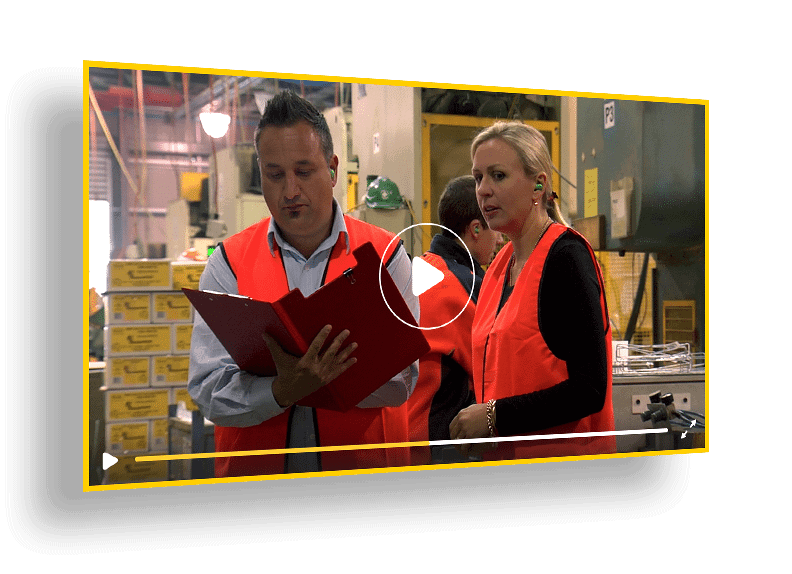A safety culture refers to the shared values, attitudes, beliefs and practices within an organization that prioritize and promote safety as a core value. It involves everyone – from top management to frontline employees – embracing safety as an integral part of their daily work and decision-making processes. A strong safety culture encourages open communication, proactive hazard identification, continuous improvement and empowers employees to take ownership of safety, resulting in a safer and more productive work environment.
Creating a safety culture in an organization involves fostering a shared commitment to safety at all levels. It requires strong leadership support, effective communication and employee engagement. Encouraging safety training, reporting and continuous improvement cultivates a safety mindset – reducing accidents and promoting a safer work environment.
Introducing the concept of a safety culture in an organisation and its importance in promoting a safe work environment is paramount in beginning to foster employee engagement for sustaining the safety culture.
1. Understanding Safety Culture
What is a Safety Culture: Define safety culture within your organization and explain its influence on your employees’ attitudes, behaviors and decision-making regarding safety.
Importance of Safety Culture: Foster discussion on the impact of a positive safety culture for reducing accidents, improving morale and increasing productivity. Emphasize the role of employee engagement in shaping and sustaining a strong safety culture.

2. Leadership Commitment
Leading by Example: Highlight the significance of leaders and supervisors demonstrating a strong commitment to safety through their actions. Discuss the importance of visible leadership presence, regular safety communication and active participation in safety initiatives.
Establishing Safety Policies and Procedures: Ensure everyone understands the importance of clear and well-defined safety policies and procedures that align with organizational goals and values. Discuss the need for consistent enforcement of safety rules and expectations.
3. Effective Communication
Safety Meetings and Toolbox Talks: Discuss the value of regular safety meetings and toolbox talks in promoting open dialogue and sharing safety information. Provide tips for conducting effective safety meetings, including active participation and addressing employee concerns.
Safety Reporting and Incident Investigation: Highlight the significance of establishing a non-punitive safety reporting system to encourage employees to report near-misses and incidents. Discuss the importance of conducting thorough incident investigations to identify root causes and implement corrective actions.
4. Employee Involvement and Empowerment
Training and Education: Emphasize the importance of providing comprehensive safety training to equip employees with the knowledge and skills to perform their tasks safely. Discuss the benefits of involving employees in safety program development, including their input in identifying hazards and developing safety procedures.
Recognition and Rewards: Discuss the effectiveness of recognizing and rewarding employees for their safety achievements and contributions. Highlight the impact of positive reinforcement in desired safety behaviors and motivating employees to prioritize safety.

This online collection of safety training video content is organized around Basic Occupational Health and Safety Training and will assist your employees to learn about workplace safety training topics by watching online videos and completing assessments.
Empowering Employees to Speak Up: Address the significance of creating a psychologically safe environment that encourages employees to voice safety concerns or suggestions. Discuss the benefits of empowering employees to take ownership of safety by giving them the authority to stop work if they perceive imminent danger.
5. Continuous Improvement
Safety Audits and Inspections: Highlight the importance of regular safety audits and inspections to identify potential hazards and ensure compliance with safety standards. Discuss the benefits of involving employees in the inspection process to enhance their safety awareness.
Feedback and Continuous Learning: Emphasize the importance of providing feedback to employees on their safety performance and encouraging them to continuously improve.
Discuss the value of conducting safety-related surveys and assessments to gather employee feedback and insights.
Going forward, organisations should continue emphasizing the role of employee engagement in creating and sustaining a safety culture. Encourage the organization to prioritize employee involvement, effective communication and continuous improvement in their safety initiatives. Highlight that by fostering a strong safety culture and engaging employees, the organization can create a safer work environment, reduce incidents and enhance overall productivity and well-being.


